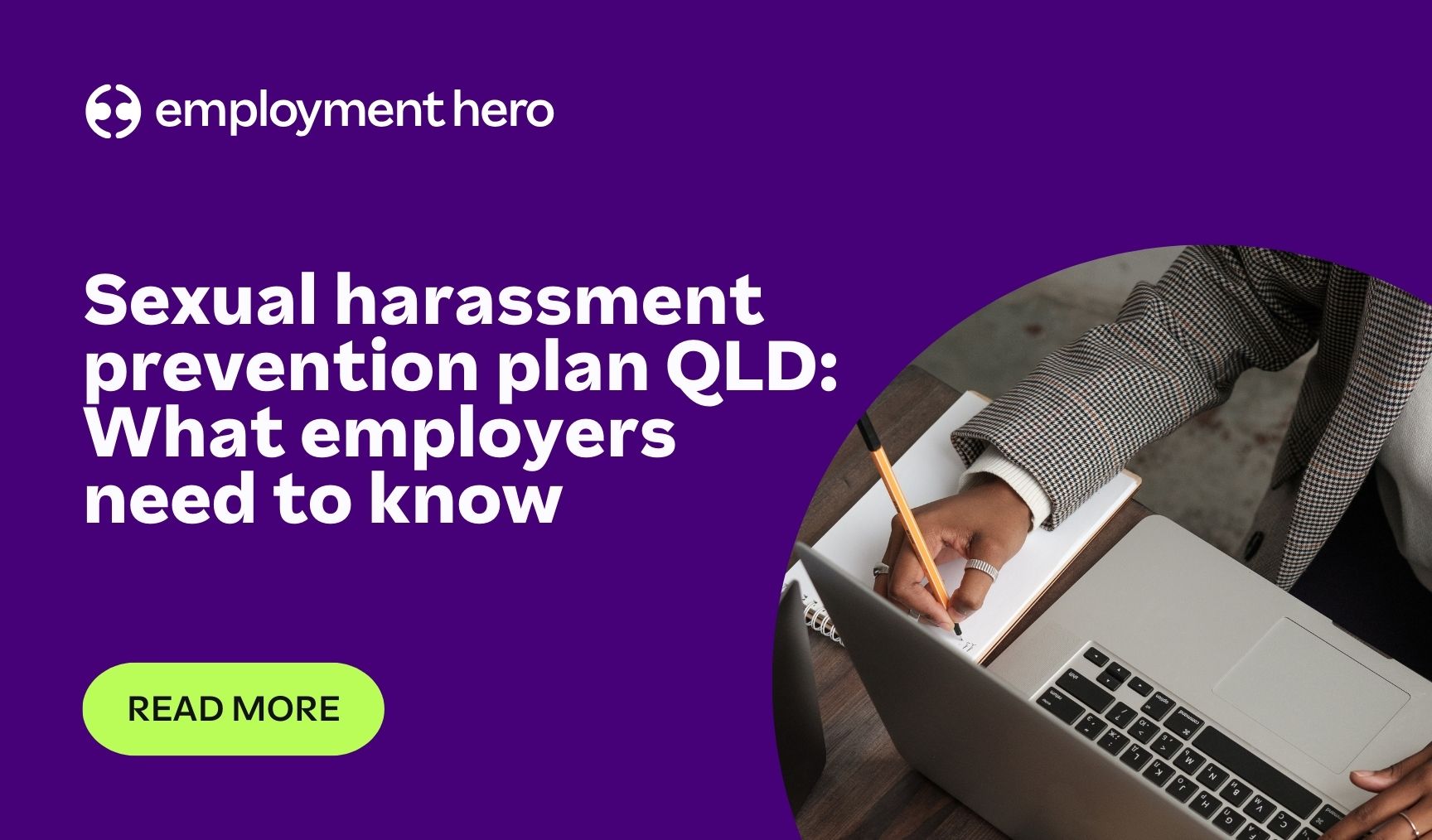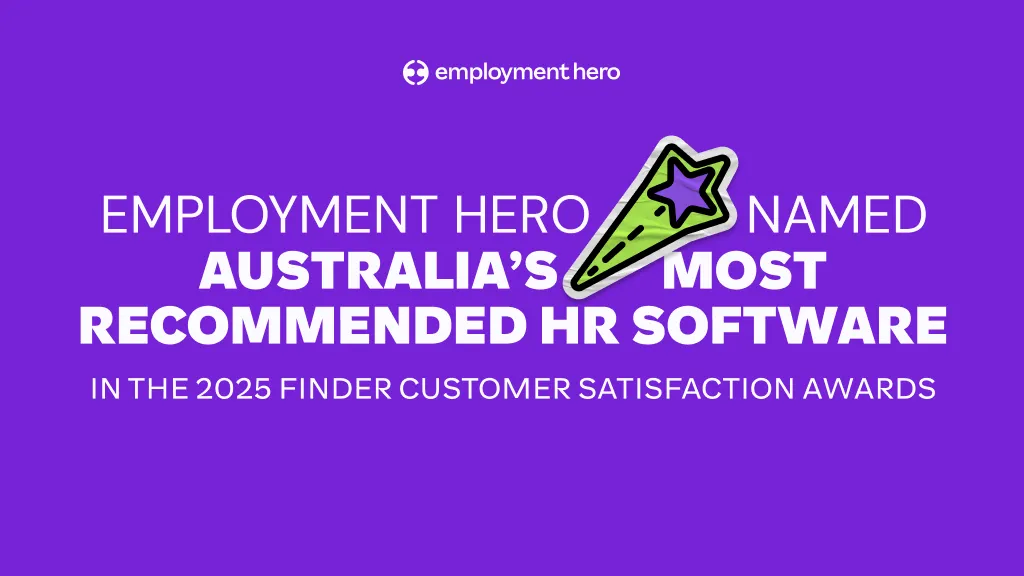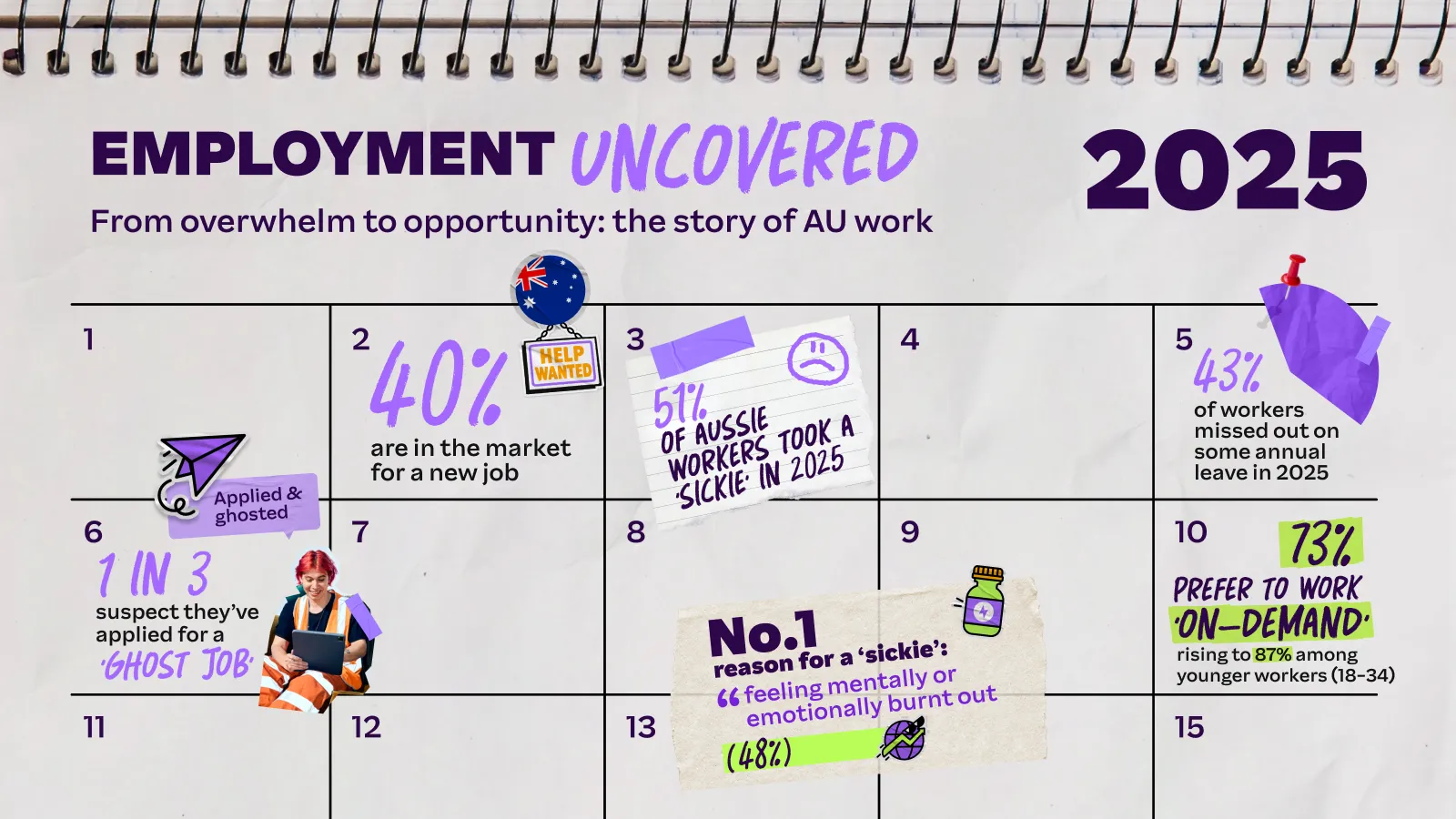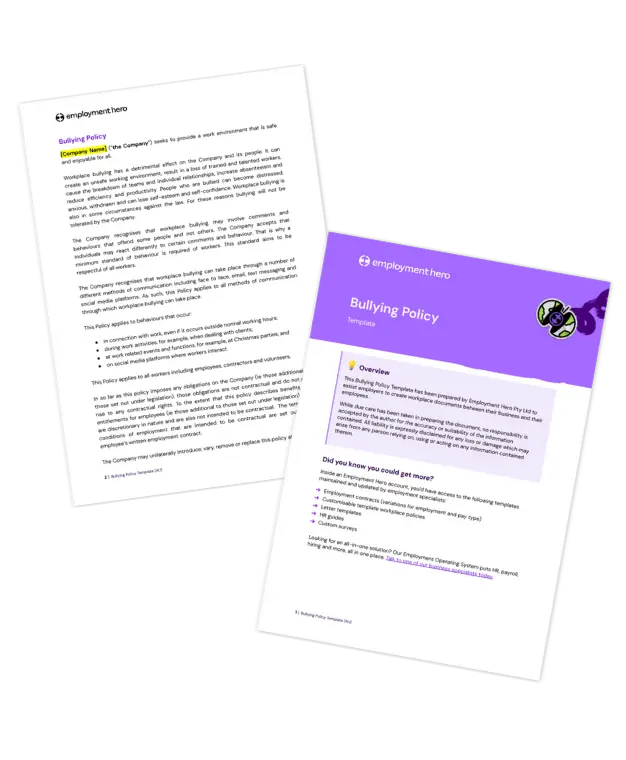Sexual harassment prevention plan for Queensland employers
Queensland employers are now required to have a sexual harassment prevention plan.

Are you an employer in Queensland and don’t yet have a written sexual harassment prevent plan in place? This one’s for you. On 1 September 2024, a new law was introduced for Queensland employers via the Work Health and Safety (Sexual Harassment) Amendment Regulation 2024. The law did not take effect immediately, but from 1 March 2025, new obligations are now in effect for Queensland employers. These new laws in Queensland mean that any “Person Conducting a Business or Undertaking” (PCBU), including all employers, must have a written sexual harassment prevention plan in place from 1 March 2025. Specifically, the plan must identify risks and control measures for sexual harassment and sex or gender-based harassment at work. This includes the ways to mitigate the risk of sexual harassment from workers’ colleagues and third parties, such as customers and members of the public. We’ve wrapped up everything employers need to know about the new law requiring Queensland employers to have a written sexual harassment prevent plan, so you can be confident as we move through 2025.
Disclaimer: The information in this article is relevant as at 10 March 2025, and has been prepared by Employment Hero Pty Ltd ABN (11 160 047 709) (Employment Hero). The views expressed herein are general information only and are provided in good faith to assist employers and their employees. The Information is based on data supplied by third parties. While such data is believed to be accurate, it has not been independently verified and no warranties are given that it is complete, accurate, up to date or fit for the purpose for which it is required. Employment Hero does not accept responsibility for any inaccuracy in such data and is not liable for any loss or damages arising either directly or indirectly as a result of reliance on, use of or inability to use any information provided in this article.
Understanding the new law for Queensland employers in detail
Under Queensland Health and Safety laws, a PCBU has a duty to manage risks to the health or safety of their workers (and other people affected by their work) from unlawful harassment at work. To manage these risks, the new law now requires that businesses recognise the potential scenarios or characteristics of people and environments that may increase the risk of harassment at work. This includes the characteristics of workers (such as their age or gender) and the characteristics of the workplace or work environment (such as a lack of diversity in the workplace or the presence of alcohol in the workplace). The Explanatory Note to the new law highlights that women, LGBTQIA+ workers, Aboriginal or Torres Strait Islanders, workers with a disability and migrant workers are all subject to an increased risk of experiencing sexual harassment at work.
How to develop a sexual harassment prevention plan
As part of the obligation to assess risks and implement control measures, a PCBU must prepare and implement a written harassment prevention plan. This plan should outline the ways in which the employer will manage each risk to the health or safety of workers from unlawful harassment at work. When developing the sexual harassment prevention plan, it’s essential that employees and any other relevant stakeholders are consulted. The sexual harassment prevention plan must include:
- Any control measures already in place, as well as those that will be implemented in future to manage each risk. The matters considered in determining these control measures should also be included.
- The consultation process that was undertaken as part of this process.
- The procedure for dealing with reports of unlawful harassment at work.
The PCBU must also:
- Ensure that the harassment prevention plan is set out and expressed in a way that is readily accessible and easy to understand for employees.
- Take reasonable steps to ensure employees are made aware of the plan and know how to access it.
How often should the sexual harassment prevention plan be reviewed?
The plan must be reviewed by the PCBU every three years, and as soon as practicable after a report of unlawful harassment. It also must be reviewed if there is a request to do so by a:
- Health and safety committee in the workplace; or
- Worker’s health and safety representative.
Where can I get a template plan?
Helpfully, Worksafe Queensland has published a sexual harassment prevention plan template and an example of a completed plan, together with some further guidance. Learn more and download the template here.
Is a sexual harassment prevention plan different to a sexual harassment policy?
Yes. A sexual harassment policy generally has the purpose of explaining to workers what sexual harassment is, that it is not tolerated in the workplace, how to make a complaint of sexual harassment, and the support available to workers who suffer sexual harassment in the workplace. A sexual harassment prevention plan is a document that evidences a PCBU’s process of assessing the particular risks of sexual harassment that exist in their workplace, and the controls they will implement to manage those risks.
What is the penalty for not having a plan in place?
PCBUs, including employers, can be fined up to 60 penalty units ($9,679 at the time the law was implemented) for failing to have a plan or to review it. The Work Health and Safety regulator can also issue on-the-spot fines, improvement notices, and prohibition notices for failing to comply with the new obligations.
Not sure how to put together a written sexual harassment prevention plan? Let our team of HR experts help.
When new laws come into effect, it can be difficult to know you’re fulfilling your employer obligations. To help boost your compliance confidence, our team of HR experts can help you put together a written sexual harassment prevention plan, plus so much more. With our HR advisory service, you can get unlimited access to HR and employment advice, compliance checks, approved tools and templates and even legal representation. We’ll help give you the confidence and peace of mind to manage your workforce, and focus on your business goals. If you’d like to learn more, get in touch with one of our HR specialists today.
Related Resources
-
 Read more: Employment Hero Named Australia’s Most Recommended in 2025 Finder Awards
Read more: Employment Hero Named Australia’s Most Recommended in 2025 Finder AwardsEmployment Hero Named Australia’s Most Recommended in 2025 Finder Awards
Employment Hero was voted the most trusted and recommended HR software in the 2025 Finder awards from more than 60,000…
-
 Read more: Employment Uncovered 2025: The Story of Australian Work
Read more: Employment Uncovered 2025: The Story of Australian WorkEmployment Uncovered 2025: The Story of Australian Work
Inside the story of Australian work in 2025. From rising ‘sickies’ to hiring fatigue, see how workforce patterns are shifting.…
-
 Read more: PEO vs. EOR: A guide to global hiring
Read more: PEO vs. EOR: A guide to global hiringPEO vs. EOR: A guide to global hiring
Learn the key differences between a PEO and an EOR. Discover why an EOR is the smarter, safer way to…

























